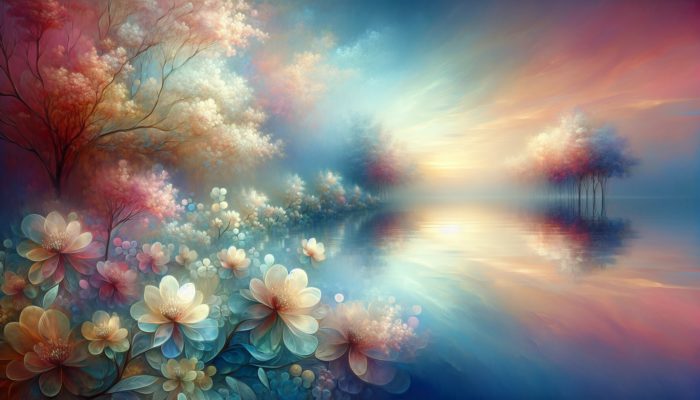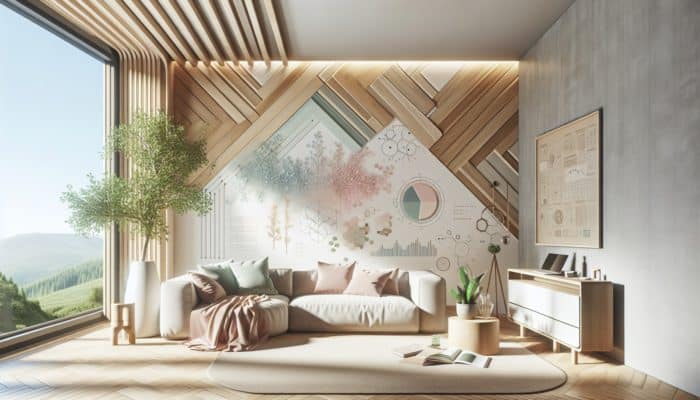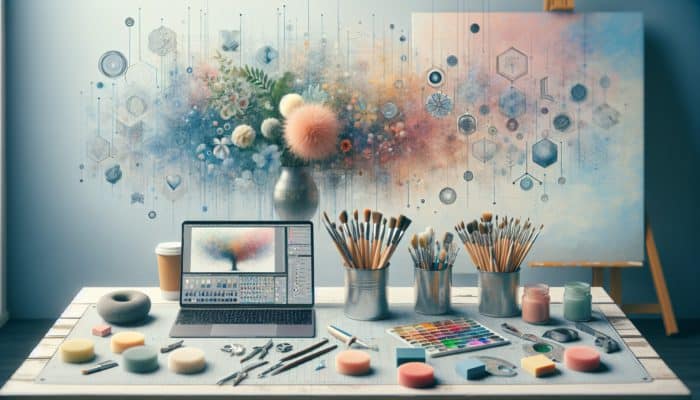Uncover the Enchantment of Whispering Pixie Colours
Understanding the Essence and Importance of Whispering Pixie Colours

Whispering pixie colours embody a stunning array of gentle, ethereal shades that evoke feelings of tranquility and magic. Drawing inspiration from the wonders of nature, these colours reflect the delicate transformations found in the early morning sky, the soft tones of blooming flowers, and the calm surfaces of peaceful waters. Deeply connected to folklore, these hues encapsulate the enchanting essence of the natural world, making them a favourite among artists and designers who seek to create harmonious and inviting environments. Whether applied in painting, textiles, or digital art, these enchanting shades transport viewers into a dreamlike realm, providing a sanctuary from the tumult of everyday life.
The appeal of whispering pixie colours lies in their remarkable adaptability. They mix seamlessly with one another, forming a visually stunning aesthetic that resonates with diverse audiences worldwide. The growing utilisation of these colours across various artistic fields highlights a collective desire for beauty and peace in an often chaotic world.
Perfect Your Skills in Soft Blending Techniques for Striking Results
Soft blending is an essential artistic technique that involves the gentle fusion of multiple shades to create smooth transitions. This skill, refined by artists throughout history, is particularly effective with whispering pixie colours, enabling the creation of soft gradients that appear both fluid and natural. Here are some indispensable techniques for achieving exquisite soft blends:
- Use a light touch with brushes to avoid harsh lines.
- Employ circular motions to blend colours smoothly and uniformly.
- Layer thin applications of colour to build depth and dimension without overwhelming the canvas.
- Integrate blending mediums to enhance the mixability of colours.
- Experiment with sponges for unique textured effects.
These techniques empower artists to craft ethereal landscapes or portraits where gentle transitions mesmerise viewers, inviting them to explore the deeper meanings within the artwork. Mastering soft blending amplifies artistic expression and is crucial in contemporary design, enabling the creation of captivating settings that resonate with harmony and peace.
The Historical Significance of Pixie Colours in Artistic Expression
The notion of pixie colours holds a rich historical narrative, drawing from ancient folklore and artistic traditions spanning various cultures. These hues often symbolise mystical elements linked to nature, illustrating the delicate interplay between light and shadow. Historically, artists have harnessed these soft colours to evoke emotions, frequently portraying tranquil scenes that reflect a harmonious connection with the natural world.
From whimsical illustrations in children’s literature to the serene landscapes of the Romantic era, whispering pixie colours have consistently sparked the imagination. This historical context amplifies their appeal in contemporary art and design, where they are valued for their ability to evoke nostalgia and tranquillity. As artists continue to delve into these colours, they revitalise time-honoured traditions, creating works that resonate across generations and cultures.
Incorporating Whispering Pixie Colours into Modern Design Practices

In the contemporary design landscape, whispering pixie colours are utilised across a multitude of contexts, from interior design to fashion and digital graphics. The calming nature of these hues aligns seamlessly with current trends prioritising wellness and biophilia, allowing designers to craft spaces that foster relaxation and creativity. For instance, interior decorators increasingly favour soft pastels and muted tones to cultivate a sense of serenity in living areas, often incorporating natural elements such as plants and wood to enhance the overall aesthetic.
In the realm of fashion, designers are embracing these ethereal shades to create collections that embody elegance and whimsy, appealing to consumers seeking both comfort and style. Moreover, in graphic design, the application of whispering pixie colours can elevate branding efforts, rendering them more approachable and inviting. As awareness of colour’s emotional impact deepens, the use of softly blended hues is expected to expand, reflecting a global trend towards environments and aesthetics that emphasise comfort, enchantment, and a connection to nature.
Insights from Professionals on Softly Blending Whispering Pixie Colours
Expert Techniques for Creating Soft Blends in Artistic Work
Professionals in the fields of art and design employ a diverse array of tools and techniques to achieve the captivating soft blends characteristic of whispering pixie colours. Mastering these methods necessitates a blend of skill and a comprehensive understanding of the materials involved. For example, traditional artists might prefer soft brushes that allow for delicate applications, while digital artists utilise software tools engineered to ensure smooth transitions.
Real-world examples of expert blending techniques include the use of airbrushing in mural art, where artists craft expansive backgrounds that seamlessly flow into the foreground. The layering technique is frequently employed in oil and acrylic painting to gradually build depth and dimension. This nuanced approach enables intricate details that maintain the ethereal quality of pixie colours while ensuring viewer focus remains on the overall composition.
The combination of these methods not only showcases the artist's technical expertise but also their capacity to evoke emotion through colour. By mastering the manipulation of these techniques, artists can produce visually stunning works that resonate deeply with viewers, transforming spaces and experiences in the process.
Essential Tools for Effective Soft Blending Techniques

To achieve the enchanting effects typical of soft blending, artists and designers require a variety of essential tools. These tools encompass traditional painting instruments as well as advanced digital software, each offering unique advantages for the blending process. Key tools include:
- Soft brushes: Ideal for gentle application and feathering techniques.
- Airbrushes: Provide fine control and enable seamless gradients.
- Sponges: Perfect for creating textured effects and soft transitions.
- Blending mediums: Enhance the flow and mixability of colours.
- Digital software: Programs like Photoshop or Procreate offer versatile options for digital blending techniques.
Selecting the right tools is crucial for achieving desirable results. Artists should consider their working medium and personal style when choosing their instruments. For instance, a painter may prefer a specific brush type for its softness, while a digital artist might depend on certain software features that facilitate smooth blending. The thoughtful selection of tools, combined with practice and experimentation, can significantly enhance an artist's ability to create stunning works that encapsulate the enchanting qualities of whispering pixie colours.
Is Soft Blending a Skill Anyone Can Learn?
Certainly, anyone can acquire the art of soft blending with the right guidance and consistent practice. While some individuals may possess a natural affinity towards art, blending techniques are skills that can be developed over time. The learning curve may vary for each person; however, with dedication and a willingness to experiment, anyone can excel in the art of soft blending.
Beginners should commence by familiarising themselves with various techniques and tools, gradually advancing to more complex methods as their confidence builds. Participating in workshops or seeking mentorship from seasoned artists can provide invaluable insights and constructive feedback, assisting novices in circumventing common pitfalls. As individuals engage in practice, they should concentrate on understanding colour relationships and the properties of different mediums, which will bolster their blending capabilities. With patience and perseverance, the enchanting world of whispering pixie colours can be made accessible to all.
Advanced Techniques for Perfecting the Blending of Whispering Pixie Colours
Exploring the Dry Brushing Technique in Artistic Practice
Dry brushing is a technique that employs a brush with minimal paint to achieve soft, feathery effects, rendering it particularly effective for blending whispering pixie colours. This method allows artists to create subtle textures and gentle transitions that capture the ethereal quality of pixie hues. The process involves using a dry brush to lightly drag across the surface, resulting in a delicate overlay of colour.
To master the dry brushing technique, artists can follow these steps:
- Select a brush with soft bristles capable of holding minimal paint.
- Choose colours that harmonise beautifully together.
- Load the brush with a small amount of paint, removing any excess on a paper towel.
- Using a light touch, apply the brush to the surface in short, sweeping motions.
- Gradually build up layers to achieve the desired softness and depth in the artwork.
This technique is exceptionally versatile and can be applied to various surfaces, including canvas, wood, and even walls. As artists refine their dry brushing skills, they have the potential to create enchanting scenes that invite exploration while emphasising the dreamlike qualities of whispering pixie colours. The beauty of dry brushing lies in its ability to transform simple compositions into complex, layered works that captivate the imagination.
The Influence of Light on Colour Blending Techniques
Light is a fundamental element in the blending of colours, significantly influencing how they appear and interact with one another. Understanding the effects of light is crucial for artists aiming to achieve softness and depth in their work, particularly when using whispering pixie colours. The quality, direction, and intensity of light can create diverse effects, shaping the overall mood and atmosphere of a piece.
When blending, artists should consider how light interacts with different colours. For instance, warmer tones may appear more vibrant under direct light, whereas cooler shades may seem to recede, creating a sense of depth. By manipulating light in their compositions, artists can guide the viewer's gaze and elicit specific emotions. Techniques such as glazing or layering can enhance light effects, facilitating soft blending while retaining the distinct characteristics of each colour.
Ultimately, the interplay between light and colour is a delicate balance that artists must master. By comprehending how light affects their chosen hues, they can create harmonious transitions that elevate their work, resulting in captivating pieces that resonate with viewers on multiple levels.
Employing Layering for Effective Soft Blends
Layering is a foundational technique in art that involves applying multiple thin coats of colour to create a soft blend. This method is particularly effective when working with whispering pixie colours, as it facilitates gradual transitions that evoke a sense of depth and luminosity. By layering colours, artists can achieve the ethereal quality that defines these hues, crafting compositions that seem to glow from within.
To effectively implement layering for soft blends, artists should adhere to these guidelines:
- Commence with a base layer of colour as a foundation.
- Allow each layer to dry completely before adding the next to prevent muddiness.
- Utilise transparent or semi-transparent paints for effective layering.
- Experiment with blending techniques between layers to enhance depth and dimension.
- Apply additional layers strategically, focusing on areas that require more depth or vibrancy.
This technique not only enhances the visual appeal of artworks but also contributes to the overarching narrative conveyed through colour. As artists hone their layering skills, they can develop intricate compositions that encourage viewers to engage with the subtleties of colour and light, ultimately highlighting the enchanting qualities of whispering pixie colours.
Utilising Blending Mediums for Smooth Transitions
Blending mediums play a crucial role in enhancing the flow and mixability of whispering pixie colours, simplifying the creation of seamless transitions in artwork. These mediums, comprised of various additives and solvents, help modify the properties of paint, enabling artists to achieve the desired softness and blending effects.
To successfully utilise blending mediums for smooth transitions, consider the following approaches:
- Select the appropriate blending medium for your chosen paint type.
- Mix a small amount of the medium with the paint to achieve a smoother consistency.
- Test the effect on a separate surface before applying it to your main artwork.
- Apply the blended paint using gentle strokes to avoid harsh lines.
- Experiment with different ratios of medium to paint to discover the ideal balance for your work.
Utilising blending mediums not only enhances the quality of the artwork but also opens up new avenues for creative expression. By mastering the application of these mediums, artists can delve into the enchanting realm of whispering pixie colours, creating blends that evoke emotion and wonder. The careful application of blending mediums facilitates the creation of soft, dreamlike compositions that resonate deeply with viewers.
Advanced Blending Techniques with Airbrushing
Airbrushing is an advanced technique that offers precise control over colour application, making it particularly suited for achieving subtle gradients and smooth blends in artworks utilising whispering pixie colours. This method involves using an airbrush tool to spray paint in a fine mist, resulting in a seamless effect that can be challenging to replicate with traditional brushes.
To master airbrushing for soft blending, artists should adopt the following techniques:
- Begin with a well-prepared surface to ensure an even application.
- Use low pressure to create a gentle mist, gradually building up colour.
- Keep the airbrush in motion to avoid pooling or uneven application.
- Layer colours gradually, allowing each layer to dry before applying the next.
- Experiment with different nozzle sizes for varying effects.
The precision of airbrushing empowers artists to create intricate details while preserving the soft, ethereal quality of whispering pixie colours. As they refine their airbrushing skills, artists can develop unique techniques that elevate their work, resulting in pieces that captivate and inspire. Mastering this technique not only broadens an artist's repertoire but also enhances their ability to convey emotion through colour.
Exploring the Versatile Applications of Blending Whispering Pixie Colours
Utilising Whispering Pixie Colours in Artistic Creations
Artists across various mediums are increasingly embracing the soft blending of whispering pixie colours in their creations. This technique facilitates the development of ethereal landscapes, delicate portraits, and abstract pieces that evoke a sense of magic and tranquillity. The versatility of these colours enables artists to explore a wide range of subject matter while maintaining a cohesive aesthetic.
For instance, in painting, artists may employ soft blends to create dreamy atmospheres that transport viewers to fantastical realms, often drawing inspiration from nature and folklore. In digital art, blending techniques can yield stunning visuals that replicate the fluidity of traditional mediums while offering fresh opportunities for expression. By harnessing the enchanting qualities of whispering pixie colours, artists can craft works that resonate on an emotional level, inviting viewers to engage with their creativity in profound ways.
Furthermore, the blending of these colours extends beyond fine art; it also permeates illustration, where children’s books often incorporate soft pastels to create inviting imagery that captivates young audiences. The applications of blending whispering pixie colours are vast, reflecting a universal appreciation for beauty and enchantment in artistic expression.
Incorporating Whispering Pixie Colours in Decorative Arts
The decorative arts have fervently embraced the soft blending of whispering pixie colours to create calming and inviting spaces. These colours can transform interiors, textiles, and pottery into enchanting pieces that elevate the overall atmosphere of a room. For example, in interior design, walls painted in soft pastels can provide a serene backdrop that promotes relaxation and comfort, making them ideal for spaces such as bedrooms and meditation rooms.
Textiles featuring softly blended pixie colours can add a whimsical flair to furnishings, while hand-painted pottery incorporating these hues brings a sense of artistry and individuality to everyday items. The application of whispering pixie colours in decorative arts reflects a growing trend towards biophilic design, where natural elements and colours are integrated into living spaces to foster a connection with the environment.
By incorporating softly blended colours into decorative arts, designers can create harmonious environments that inspire peace and creativity. The result is spaces that not only look beautiful but also enhance the well-being of their inhabitants, showcasing the transformative power of colour in design.
The Impact of Pixie Colours on Mood and Well-Being
Pixie colours possess a remarkable ability to elevate mood by fostering a serene and mystical atmosphere. Their soft, ethereal qualities resonate with individuals seeking calmness and tranquillity in their surroundings. Research indicates that colours can profoundly influence emotional well-being, and whispering pixie colours exemplify this effect.
By employing these colours in spaces designed for relaxation and contemplation, individuals can experience reduced stress levels and heightened feelings of peace. Whether through art, interior design, or fashion, the presence of softly blended hues encourages an environment conducive to mindfulness and introspection.
For example, in settings such as yoga studios, the use of whispering pixie colours can cultivate a soothing ambiance, enabling practitioners to feel more at ease during their sessions. Similarly, in personal spaces, integrating these colours through decor or artwork can provide an escape from the chaos of daily life, allowing individuals to nurture a sanctuary of calm. Ultimately, the enchanting qualities of pixie colours serve to enhance mood and enrich our experiences within the spaces we inhabit.
The Research-Backed Benefits of Softly Blending Whispering Pixie Colours
Psychological Advantages Associated with Pixie Colours
Research highlights that soft, ethereal colours can significantly alleviate stress and promote relaxation, making the use of whispering pixie colours particularly advantageous in artistic and design contexts. These colours evoke feelings of calmness and serenity, drawing on their connections to nature and dreamy landscapes.
The psychological benefits of incorporating pixie colours into various settings include:
- A decrease in anxiety levels through soothing colour palettes.
- Enhanced feelings of joy and contentment in personal spaces.
- Boosted creativity and inspiration in artistic endeavours.
- Promotion of mindfulness and a sense of tranquillity.
The gentle nature of these colours encourages individuals to engage with their environments more deeply, facilitating emotional healing and well-being. Incorporating whispering pixie colours into art and design allows creators to harness these psychological benefits, resulting in works that resonate profoundly with audiences.
Aesthetic Benefits of Whispering Pixie Colours in Art
The soft blending of whispering pixie colours can significantly enhance the aesthetic appeal of artworks, rendering them more visually captivating and harmonious. This technique empowers artists to create compositions that embody balance and tranquillity, inviting viewers to experience the artwork on multiple levels. Ethereal colours often evoke a sense of nostalgia and wonder, contributing to the overall narrative and emotion conveyed through the piece.
When artists skillfully blend these colours, they can create depth and dimension that draws the viewer in, engaging them with the nuances of light and shadow. The use of whispering pixie colours can elevate traditional art forms, transforming them into contemporary masterpieces that resonate with audiences from diverse backgrounds.
Furthermore, these colours are particularly effective in establishing a sense of atmosphere, enabling artists to communicate themes of nature, fantasy, and emotion. This aesthetic advantage not only enhances the visual experience but also contributes to the overarching impact of the artwork on society, fostering deeper connections between the viewer and the artist's intent.
Therapeutic Applications of Pixie Colours
The therapeutic potential of whispering pixie colours is increasingly acknowledged in art therapy, where these colours are employed to help individuals articulate emotions and attain a state of calm. The soothing qualities of soft, ethereal hues can facilitate emotional release and promote healing, rendering them invaluable tools in therapeutic contexts.
Art therapists often encourage clients to explore their feelings through colour, allowing them to create works that mirror their emotional states. By incorporating whispering pixie colours, individuals can tap into the calming effects of these hues, fostering a sense of safety and acceptance during the creative process.
Moreover, the act of creating art with these colours can serve as a meditative practice, aiding individuals in focusing their thoughts and achieving mindfulness. As clients engage with the soft blends of pixie colours, they may uncover new insights and perspectives, enhancing their overall well-being. The therapeutic applications of these colours underscore the profound impact that art and colour can have on emotional health, highlighting their significance in both personal and clinical settings.
Transforming Interior Design with Whispering Pixie Colours
Softly blended whispering pixie colours can dramatically reshape interiors, creating serene and inviting spaces that uplift mood and comfort. The incorporation of these hues into interior design reflects a growing recognition of the emotional influence of colour on our surroundings. By selecting whispering pixie colours for walls, furnishings, and decor, designers can cultivate harmonious spaces that promote relaxation and well-being.
The application of soft pastels and muted tones can evoke feelings of tranquillity, making them ideal for areas such as bedrooms, living rooms, and meditation spaces. These colours can be paired with natural materials and textures to further enhance the connection to nature.
In addition to their aesthetic appeal, whispering pixie colours can influence behavioural responses, fostering a sense of calm and comfort within the home. As individuals strive to create peaceful sanctuaries in their lives, the role of softly blended colours in interior design will continue to grow, reflecting a collective desire for harmony and balance in our surroundings.
The Influence of Pixie Colours in Fashion and Textiles
Incorporating whispering pixie colours into fashion and textiles can evoke a sense of whimsy and elegance, aligning with contemporary trends that favour soft, natural aesthetics. Designers are increasingly recognising the impact of colour on consumer choices, and the enchanting qualities of pixie colours resonate with those seeking connection and beauty in their wardrobe and home.
In fashion, the use of softly blended hues can result in garments that feel both timeless and modern, appealing to a demographic that values comfort and style. Textiles featuring whispering pixie colours can transform everyday items into statement pieces, enhancing the overall aesthetic of a space or outfit.
Moreover, the integration of these colours in sustainable fashion practices highlights a burgeoning trend towards conscious consumerism. As brands strive to create pieces that resonate with consumers on an emotional level, the use of gentle, enchanting colours will continue to flourish, embodying a collective desire for beauty and connection in our lives.
Identifying Challenges and Solutions in Blending Whispering Pixie Colours
Common Mistakes in Soft Blending Techniques
Blending whispering pixie colours softly can present challenges, and many artists encounter common pitfalls that inhibit their progress. Recognising these mistakes is essential for growth and mastery within this artistic discipline. Some frequent errors include:
- Over-blending, which can result in muddied colours and a loss of vibrancy.
- Applying too much paint, leading to heavy layers that obscure soft transitions.
- Neglecting colour theory, resulting in combinations that clash rather than harmonise.
- Failing to account for drying times between layers, which can adversely affect the final outcome.
By being aware of these common errors, artists can take proactive measures to avoid them. Practising restraint when blending and experimenting with minimal paint can lead to more successful outcomes. Furthermore, understanding the principles of colour theory can assist in making informed decisions that enhance the effectiveness of blending techniques.
Ultimately, acknowledging and addressing these mistakes is a critical part of an artist's journey, fostering growth and encouraging the development of a distinctive style that embodies the enchanting qualities of whispering pixie colours.
Solutions for Overcoming Blending Challenges
When confronted with blending challenges, artists can implement a range of solutions to enhance their techniques and outcomes. Firstly, experimenting with different tools can significantly influence the blending process. Trying out a variety of brush types, sponges, or airbrushes allows artists to discover which tools best suit their personal style and preferences.
Additionally, a solid grasp of colour theory is essential for successful blending. By familiarising themselves with colour relationships, artists can make informed decisions that optimise their work. Seeking guidance from experienced artists or participating in workshops can also provide invaluable insights and feedback, aiding in refining techniques and addressing specific challenges.
Finally, embracing experimentation and creative exploration is vital. Each artist's journey is unique, and allowing for the learning process can lead to unexpected breakthroughs in blending whispering pixie colours. By adopting these solutions, artists can overcome blending issues and elevate their work to new heights.
Navigating Technical Challenges Effectively
Overcoming technical challenges in blending whispering pixie colours necessitates a strategic approach. Mastery of tool usage is paramount; artists should invest time in becoming proficient with their chosen brushes, airbrushes, and blending mediums. Understanding the properties of various paint types will enhance their ability to achieve the desired effects.
Experimentation is key to overcoming technical challenges. Artists should be encouraged to try diverse blending techniques and tools to discover what works best for their individual style. Maintaining a sketchbook or practice canvas can facilitate this exploration without the pressure of creating a final piece.
Moreover, seeking mentorship or constructive feedback from experienced artists can provide valuable insights and help identify areas for improvement. By adopting a mindset of growth and perseverance, artists can navigate technical challenges effectively, leading to greater mastery and confidence in blending whispering pixie colours.
Anticipating Future Trends in the Blending of Whispering Pixie Colours
Emerging Techniques and Tools for Artists
The future of blending whispering pixie colours is promising, with emerging techniques and tools set to enhance the creative process. Digital art is advancing rapidly, with software capabilities expanding to include sophisticated blending features that allow for greater precision and experimentation. Artists can now explore digital canvases that replicate traditional effects while providing unique opportunities for innovation.
Additionally, new tools such as 3D printing are entering the realm of colour application, enabling artists to create intricate designs with softly blended colours in ways previously unimaginable. This technology facilitates the production of textured surfaces and layers that enrich the visual experience of artworks.
As artists continue to embrace technological advancements, the exploration of blending techniques will evolve. The integration of augmented reality (AR) and virtual reality (VR) in the creative process will also unveil new avenues for artistic expression, allowing for immersive experiences that highlight the enchanting qualities of whispering pixie colours.
The Evolution of Pixie Colours in Artistic Expression
As the realm of art and design continues to evolve, whispering pixie colours are likely to adopt new dimensions. While retaining their ethereal quality, these colours may incorporate more vibrant hues influenced by contemporary artistic trends. This evolution will reflect the dynamic nature of creativity, as artists draw inspiration from both nature and technological advancements.
Furthermore, the growing awareness of mental well-being and the emotional impact of colour will shape the palette of whispering pixie colours. Artists may increasingly experiment with colour combinations that evoke specific feelings or responses, creating works that resonate deeply with audiences across the globe.
In this context, colour will become an even more powerful tool for storytelling and connection, allowing artists to communicate complex emotions and narratives through their work. As pixie colours evolve, their role in artistic expression will continue to expand, showcasing the enchanting beauty and transformative power of softly blended hues.
The Role of Technology in Modern Blending Techniques
Technology plays an increasingly pivotal role in the blending of whispering pixie colours. With the introduction of sophisticated software and digital tools, artists can achieve unprecedented levels of precision and creativity in their work. Digital platforms facilitate seamless blending techniques that imitate traditional methods while providing the flexibility to experiment without the fear of irreversible mistakes.
For instance, software programs now feature advanced blending brushes and layering options that empower artists to create smooth transitions effortlessly. Additionally, the introduction of AI-driven tools can assist in colour selection and blending suggestions, streamlining the creative process.
Moreover, technology fosters collaboration among artists worldwide, facilitating the exchange of techniques and inspirations that enhance the collective understanding of colour blending. As artists adopt these technological advancements, the future of blending whispering pixie colours promises to be rich with innovation and creativity, ensuring that these enchanting hues continue to captivate audiences for generations to come.
Common Questions About Whispering Pixie Colours
What Exactly Are Whispering Pixie Colours?
Whispering pixie colours are soft, ethereal hues inspired by nature and folklore, often employed to create serene and magical atmospheres in art and design.
How Can I Achieve Soft Blending in My Artwork?
To achieve soft blending, utilise techniques such as dry brushing, layering, and applying a light touch with brushes. Experiment with various tools and practice consistently to refine your skills.
What Tools Are Essential for Successful Soft Blending?
Essential tools include soft brushes, airbrushes, sponges, blending mediums, and digital software such as Photoshop or Procreate, depending on your chosen medium.
Can Anyone Master the Art of Soft Blending?
Yes, anyone can learn to blend softly with appropriate guidance and consistent practice. Begin by familiarising yourself with various techniques and tools, and seek constructive feedback to enhance your skills.
What Are Common Mistakes in Soft Blending Techniques?
Common mistakes include over-blending, excessive paint application, neglecting colour theory, and disregarding drying times between layers.
How Can I Improve Mood with Pixie Colours?
Pixie colours enhance mood by creating serene atmospheres that promote relaxation and tranquillity, making them ideal for spaces intended for contemplation and mindfulness.
What Psychological Benefits Are Associated with Using Pixie Colours?
Pixie colours can help reduce anxiety, increase feelings of joy, boost creativity, and promote mindfulness, contributing positively to overall emotional well-being.
What Are the Applications of Whispering Pixie Colours in Design?
These colours are utilised in interior design, fashion, and art, crafting calming and enchanting environments that resonate with audiences globally.
How Can I Use Layering for Soft Blends?
Layering involves applying multiple thin coats of colour, allowing each layer to dry completely before the next. This builds softness and depth within the artwork.
How Will Pixie Colours Evolve in the Future?
Pixie colours are likely to evolve to incorporate more vibrant hues while maintaining their ethereal quality, influenced by contemporary trends and emerging artistic technologies.
Connect with Us on Facebook!
The Article: Blending Whispering Pixie Colours Softly: A Universal Guide appeared first on Amitys Hair Salon.
The Article Whispering Pixie Colours: A Universal Blending Guide Was Found On https://limitsofstrategy.com

